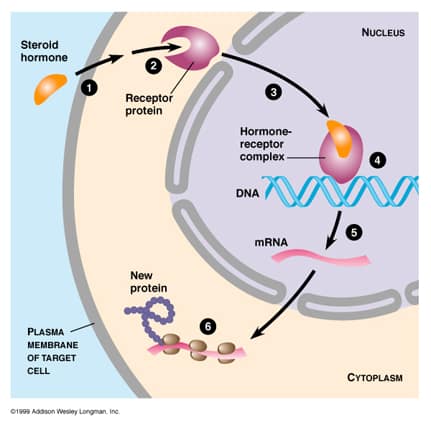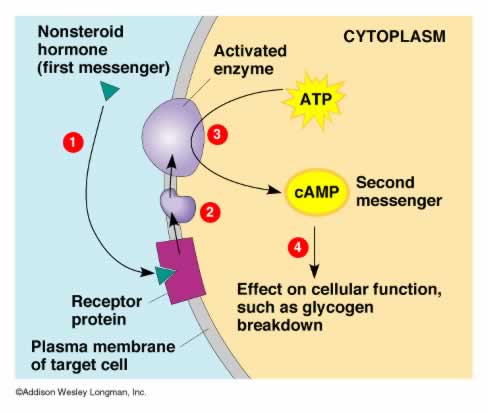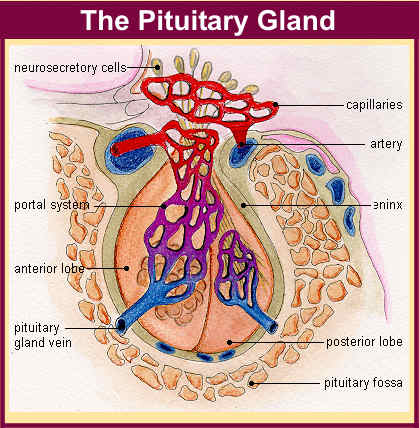Function:
▪ synthesize and release hormones permitting them to act in concert and respond to changes in the body and maintain stability (homeostasis)
▪ Example organs – thyroid, pancreas (islets of Langerhans), adrenal glands, pituitary gland
Tools:
– hormones
* chemicals released by cells in one part of the body that affect cells in other parts of the body
* only a small amount needed to alter cell metabolism/function
* produced in glands and released into bloodstream
* examples include: insulin, epinephrine, growth hormone
Target cells:
▪ only cells with receptors for certain hormones will be affected
▪ cells with hormone receptors are called target cells
Steroid hormones:
> many fused rings of carbon, hydrogen, oxygen, not soluble in water
> diffuse through cell membrane and combine with receptor protein in cytoplasm
> hormone-receptor complex cause cell to respond to hormone by interacting with cell DNA and stimulating protein synthesis
Protein hormones:
> made up of amino acids, soluble in water
> combine with receptor hormones on the cell membrane
> hormone-receptor complex on the cell membrane induces an internal response by the cell which results in protein synthesis
Pituitary Gland: The Master Gland
▪ controls other endocrine glands with the hormones it releases
▪ connected to hypothalamus; composed of an anterior lobe and a posterior lobe
Anterior lobe:
> produces own hormones
> hypothalamus stimulates the release of these hormones
Posterior lobe:
> stores and releases hypothalamus hormones (ex. ADH)
> hypothalamus stimulates release of hormones




superb and thank u so much
FANTASTIC SITE MAAAANNNN!!! I LOVE ENDOCRINES NOW!!!
I have been able to do my do series of assignment through this site. Amazing!